There are around 900 species of ticks in the world. Of those, about 700 belong to the Ixodidae family of hard ticks, while 200 belong to the soft-bodied Argasidae family. Ticks in North Carolina are exclusively hard-bodied, and many of them are vectors for serious diseases and pathogens, including Lyme disease. Ticks survive by consuming the blood of hosts. Most ticks are known as ‘three host’ ticks, which means they take at least one host per life stage (larva, nymph, adult). But, one tick in North Carolina is actually a single host tick.
Here, we’ll take a look at all the kinds of ticks you might find in North Carolina. We’ll learn how to tell them apart, and what diseases each species carries. Then, we’ll learn about the worst times of year for ticks in North Carolina, and how to avoid these bloodsuckers.
American Dog Tick
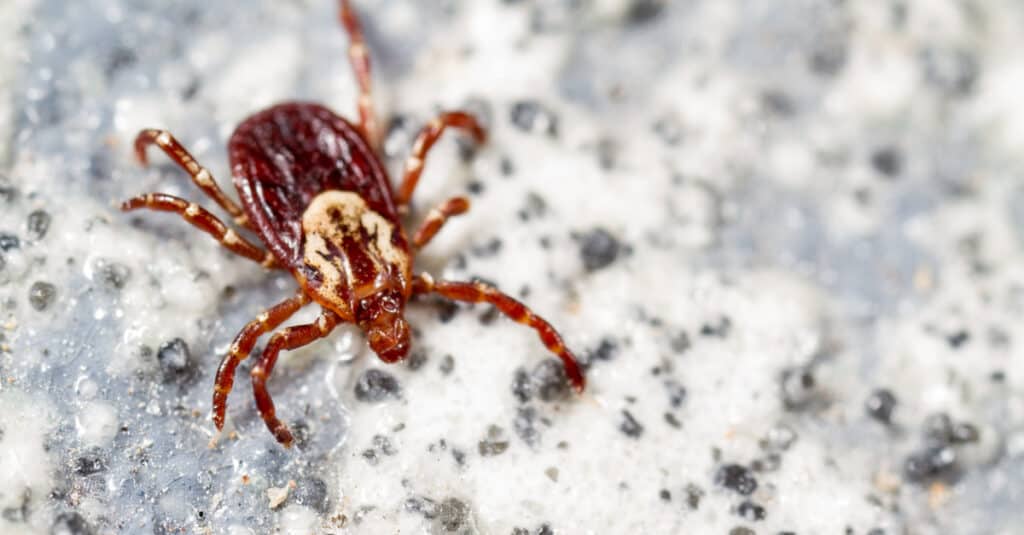
The American dog tick is also called the wood tick.
©Elliotte Rusty Harold/Shutterstock.com
American dog ticks are red-brown with red-brown legs. They’re larger than other species of ticks in North Carolina and frequently feed on both humans and dogs. They’re most likely to be picked up in tall grass or dense, waist-high foliage. American dog ticks live along the entire eastern seaboard of the United States.
Females are recognizable by their mottled tan scuta (rounded shield-like structures on the upper back) and red-brown bodies. Males have all over tan mottling. American dog ticks are the primary vector for Rocky Mountain spotted fever, which they can transmit to humans through their bite.
Winter Tick
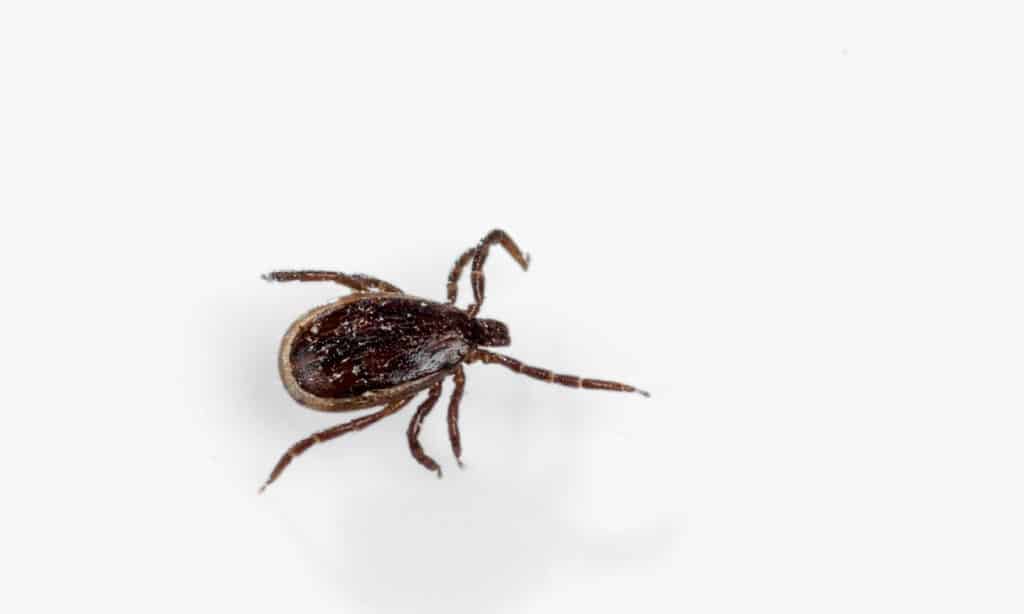
These ticks are most active in the winter months, hence their name.
©iStock.com/VladK213
Winter ticks in North Carolina are highly unlikely to bite humans. They prefer large game animals, like elk and deer, though they’ll also feed off of raccoons, bears, dogs, and coyotes. Opossums are uniquely immune to tick bites, as they’re fastidious groomers who eat any tick they find on their bodies.
The female winter tick has a red-brown body and light brown legs. Males have mottled red-brown and tan bodies. Both male and female winter ticks have small mouthparts. Because these ticks take only a single host in their lifetime, infestations can become extremely severe.
Lone Star Tick
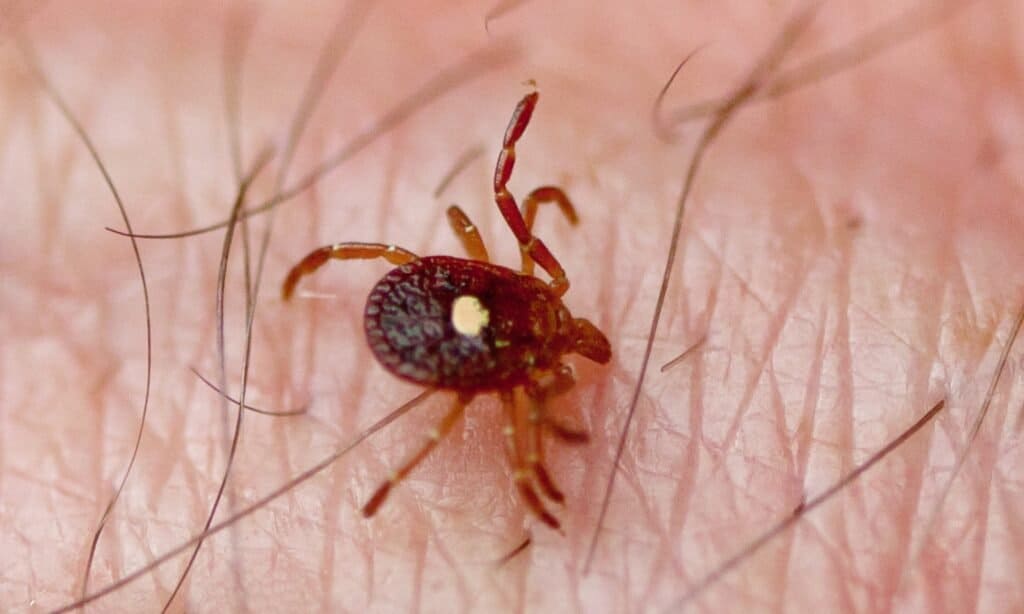
Female lone star ticks are among the most easily recognizable ticks in North Carolina.
©iStock.com/epantha
Lone star ticks are red-brown, with round bodies and large mouthparts. They’re particularly likely to feed off of humans, and may transmit Rocky Mountain spotted fever, Stari borreliosis, or monocytic ehrlichiosis to any host.
Lone star ticks feed primarily on white-tailed deer. They’re found mainly in forested areas with heavy underbrush. These ticks will feed on any small to large animal, including squirrels, raccoons, deer, dogs, or humans.
Asian Longhorned Tick
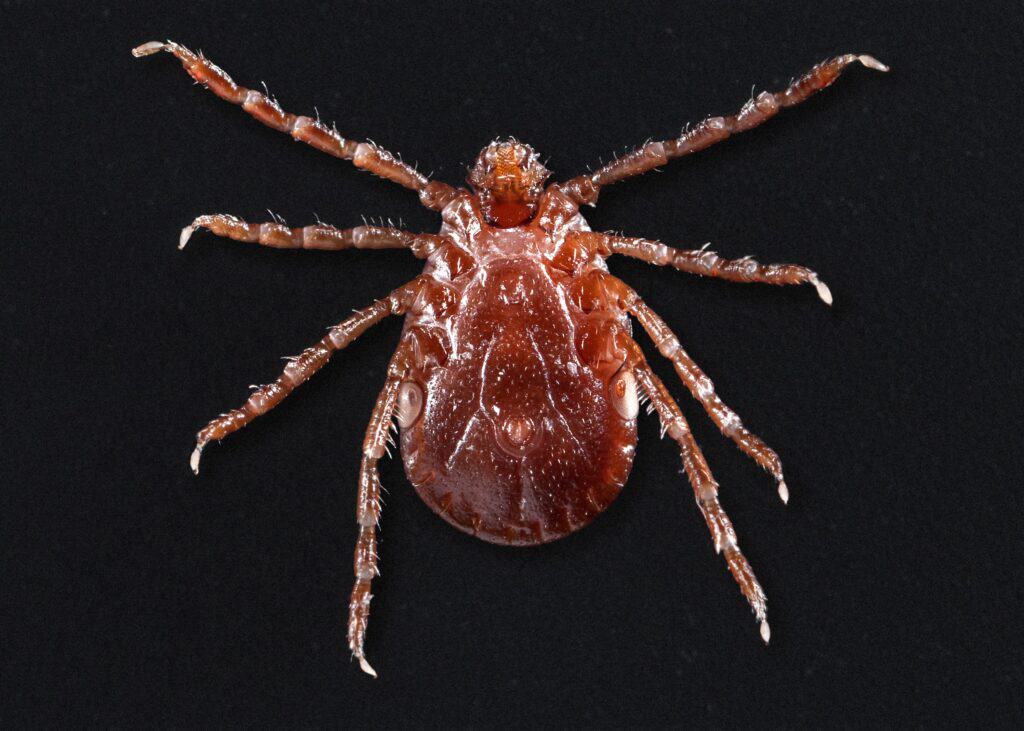
The Asian longhorned tick is the only invasive species of ticks in North Carolina.
Asian longhorned ticks are not native to North Carolina, they’re actually from the humid environs of Southeast Asia. These ticks have only been recorded in North Carolina since 2018. They prey mostly on livestock, like cows, sheep, and goats. Bites to humans are exceedingly rare.
The Asian longhorned tick has a red-brown body with long red-brown legs. Their mouthparts are small, and they’re easily distinguishable from other species of ticks in North Carolina. They are not known to transmit Lyme disease or Rocky Mountain spotted fever.
Deer Tick

Perhaps the most famous of all ticks is the deer tick, also known as the black-legged tick.
©iStock.com/Ladislav Kubeš
Deer ticks get their name from their favorite food source, and they get their alternate name from their appearance. These ticks are easy to identify because they’re the only ticks in North Carolina that have black legs. Out of all the ticks in the state, these are the only ones known to transmit Lyme disease.
Deer ticks frequently bite humans and dogs. Aside from the black legs, females are easy to identify by the orange-brown color of their bodies. Males have dark brown bodies but maintain the characteristic black legs.
Brown Dog Tick
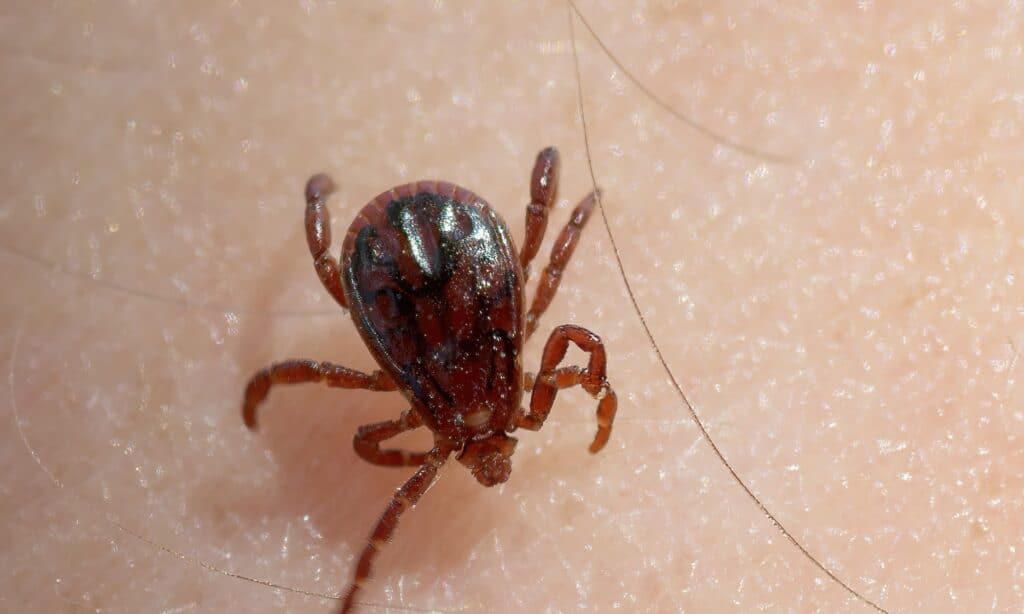
The brown dog tick is the only type of tick in North Carolina to live almost entirely indoors.
©iStock.com/RobertAx
Brown dog ticks live wherever there are human structures and dogs. True to their name, these ticks bite primarily canines. They can spread Rocky Mountain spotted fever, canine babesiosis, and canine ehrlichiosis, but only to dogs. Bites to humans are rare but do happen occasionally.
Brown dog ticks have narrow, light brown bodies when unfed. Engorged, they resemble golden grapes. If you find a brown dog tick, or any tick, on your dog, you should remove it as soon as possible.
When is Tick Season in North Carolina?
Thanks to its warm, wet weather, North Carolina is the perfect breeding ground for ticks. Ticks are most prevalent in North Carolina in the early spring and fall months. They become less active at the height of summer, and in the depths of winter. So, if you’re planning to go outdoors during peak tick season, be sure to take a few preventative measures.
How to Avoid Ticks in North Carolina
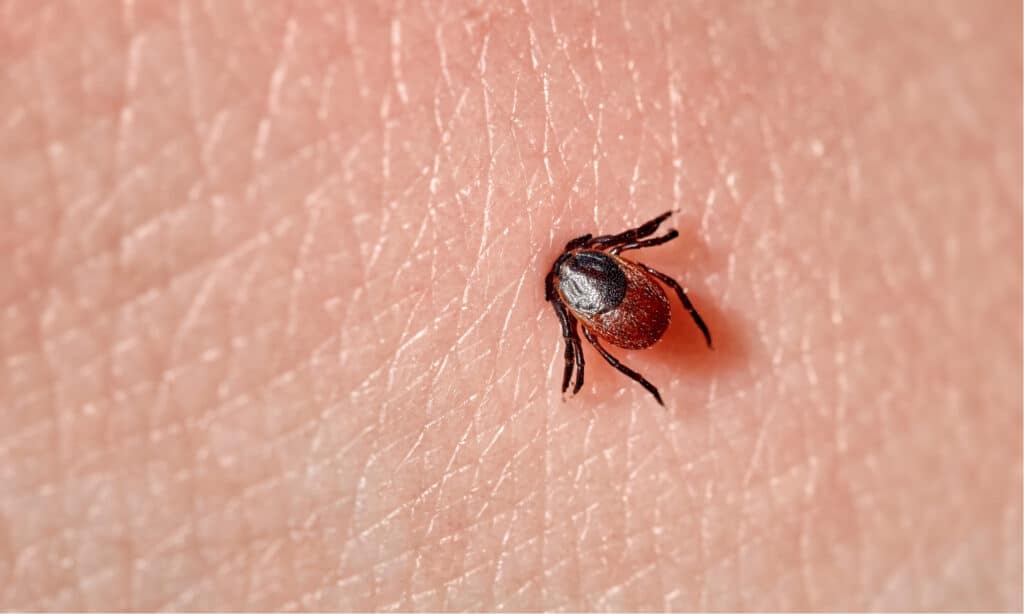
Ticks are best seen against light-colored clothing.
©Evgeniyqw/Shutterstock.com
Ticks may be tiny, but their bite can pack a pathogen-laden punch. The first step in avoiding tick bites is staying out of thick underbrush, as this gives the tick ample opportunity to hitch a ride. Next, always wear clothing that covers as much of your skin as possible. If you’re traveling in a particularly tick-heavy zone, you can even tape your pants to your boots, and your shirt to your pants.
Finally, any type of insect repellant will do its part to repel ticks. This is particularly true of permethrin, which kills ticks on contact. However, use caution when applying any bug spray, it should never come into direct contact with your skin. When you’re done hiking, camping, or trail walking, be sure to check your body thoroughly for ticks.
The photo featured at the top of this post is © iStock.com/nechaev-kon
Thank you for reading! Have some feedback for us? Contact the AZ Animals editorial team.






